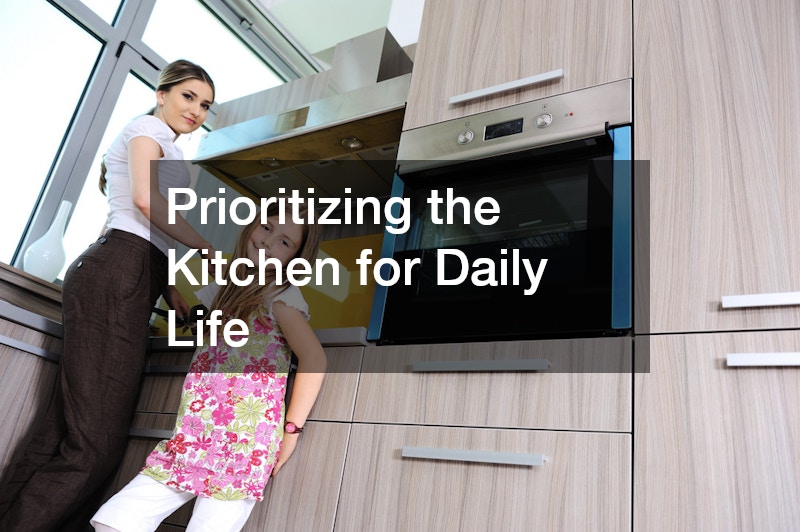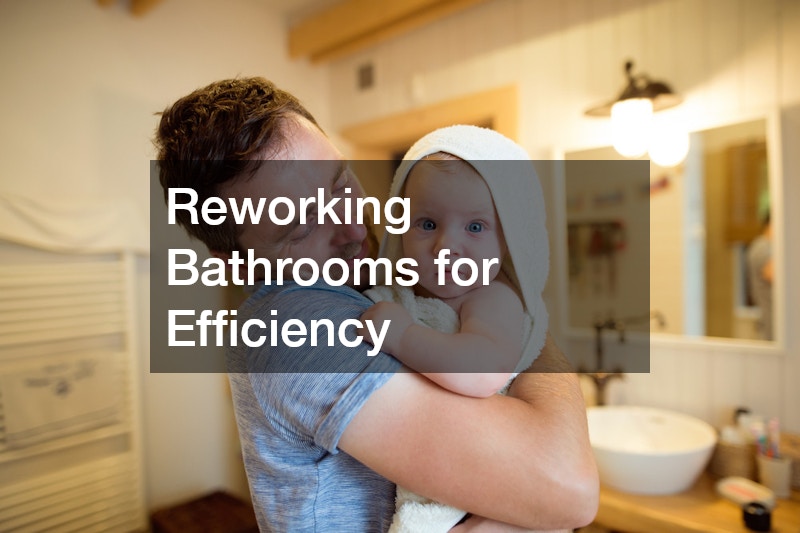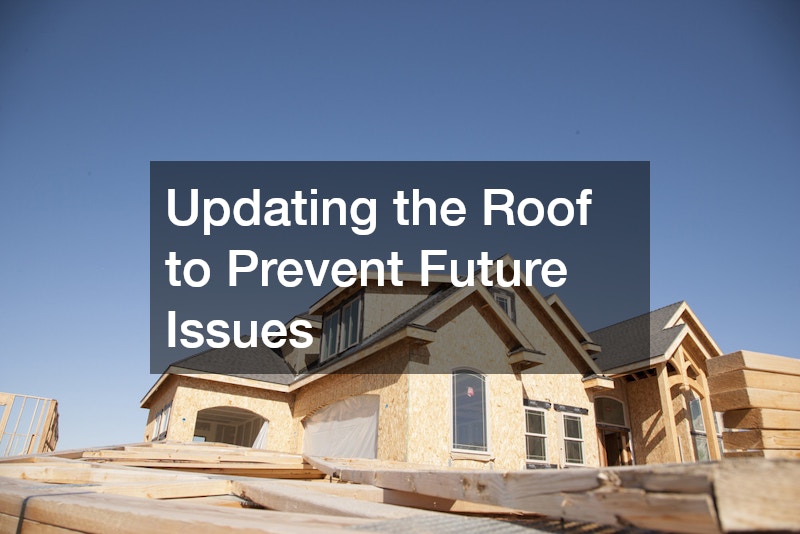As families grow, so do their needs—and sometimes, that means transforming your current home rather than seeking a new one. Rehabbing a home can be an exciting, cost-effective, and deeply personal journey, especially for growing families who want to remain rooted in their communities. But renovation is no small undertaking. Between managing budgets, timelines, and a million design decisions, it’s easy to get overwhelmed. That’s why it’s crucial to focus on priorities that will make the most significant impact on comfort, safety, and future value.
Unlike simple redecorating, rehabbing a home often involves deeper changes: updating floor plans, replacing outdated systems, or removing structural elements to open up the space. With children in the mix—whether toddlers or teens—there are additional factors like safety, durability, storage, and multi-functional living areas to consider.
This guide is built for families looking to turn their current home into their forever home. We’ll break down the most important areas to prioritize, with advice on what to tackle first and why. Each section includes expert insights, planning tips, and references to trusted resources such as a plumbing company, a local septic pumping service, and a commercial flooring company—because we know the value of having reliable professionals during this kind of project.
Whether you’re expanding your kitchen, redoing the flooring, or ensuring your HVAC and roofing systems are family-ready, knowing what to do first will help you avoid costly mistakes. Let’s dive into the essentials of rehabbing a home for families who are growing in size—and ambition.
1. Expanding Living Space for Function and Flow
One of the top priorities when rehabbing a home for a growing family is expanding your common living areas. Open-concept designs remain popular for good reason—they make supervision easier, improve social interaction, and provide flexibility. But creating more room isn’t just about knocking down walls; it also means working with the right experts and materials.
If you’re working with a demolition contractor, you’ll want to ensure that any structural changes are safe and code-compliant. Once you open the space, it’s important to plan the flow to accommodate toys, homework stations, and everyday activities. Think about where you want your family to gather, how you’ll furnish the space, and how noise travels in an open environment.
This is the perfect phase to bring in a commercial flooring company. Durable, family-friendly flooring is a must, especially in high-traffic areas like living rooms and play spaces. Flooring should be easy to clean, resistant to wear, and safe for kids who are running around barefoot or crawling.
Rehabbing a home with growing families in mind means designing for now and later. Choose neutral finishes with long-term appeal, and make structural changes that improve functionality, not just aesthetics. That way, you’re not just adding square footage—you’re building quality of life.
2. Prioritizing the Kitchen for Daily Life

The kitchen is the heart of the home—and when your family is growing, it’s also the most heavily used space. From breakfast chaos to dinner prep, snack requests to science projects, your kitchen has to work harder than ever. That’s why it’s one of the most important spaces to prioritize when rehabbing a home.
Start with layout and workflow. Are there enough countertops for meal prep? Is the fridge accessible for kids? Can more than one person comfortably cook at the same time? These questions are key for families who rely on the kitchen throughout the day.
Also, consider storage. As children grow, so do their appetites—and your need for pantry space. A thoughtful rehab plan may involve removing outdated cabinetry, extending counter space, or even knocking down a wall to open the kitchen into a larger family room.
Wood pallet disposals are something to plan for during this phase. Renovations generate a surprising amount of material waste, especially when old cabinetry and fixtures are removed. Partnering with a disposal service ensures a clean, organized worksite and faster project turnaround.
Finally, make this space welcoming. Opt for family-friendly surfaces and rounded countertop edges. Rehabbing a home means planning for everyday life—and the kitchen is where that life happens.
3. Upgrading Flooring for Comfort and Durability
New flooring can transform a home’s aesthetic while dramatically improving comfort and functionality. For families, flooring is more than a design decision—it’s about finding the right surface for crawling babies, muddy shoes, and pet paws.
A visit to a vinyl flooring store is a great starting point. Vinyl is an increasingly popular choice for family homes because it’s affordable, water-resistant, and easy to clean. Today’s vinyl options also mimic the look of wood or stone, offering style without the fragility or upkeep.
Rehabbing a home means considering both short- and long-term needs. For example, you may want different flooring in the playroom than in your entryway or kitchen. Carpet might work for bedrooms where warmth matters, while vinyl or laminate is better for high-traffic areas.
Flooring upgrades are also a chance to assess what’s under the surface. This is the time to inspect subfloors for moisture issues, squeaks, or damage. Addressing these during the renovation prevents future problems and ensures your new floors last.
Whether you’re replacing dated tile or covering worn-out hardwood, flooring upgrades offer one of the highest returns in terms of comfort and resale value. For families, it’s about durability and peace of mind—and rehabbing a home should always include both.
4. Reworking Bathrooms for Efficiency

A growing family quickly puts pressure on existing bathrooms. Long lines in the morning, messy bathtimes, and tight storage can turn a small bathroom into a major headache. That’s why bathroom updates are essential when rehabbing a home for family life.
Start with functionality. Could a powder room be converted into a full bath? Would a double vanity make mornings easier? Are there storage solutions that can make the space work harder without a full remodel?
If your home is older, plumbing should be on your radar. Outdated pipes can lead to slow drains, leaks, or even water damage. Hiring a reputable plumbing company during your rehab ensures everything behind the walls works as well as what’s in front of them.
Rehabbing a home also means thinking ahead. If you plan to stay for years, install durable fixtures and tiles that won’t go out of style. Choose finishes that are easy to clean and materials that resist mildew and moisture.
Bathrooms don’t need to be luxurious—they need to be functional, efficient, and easy to maintain. For families, that often means more outlets, smart storage, and layouts that reduce crowding during busy hours.
5. Addressing HVAC for Year-Round Comfort
Temperature control is a major factor in a family’s daily comfort. Older HVAC systems can struggle to maintain consistent heating and cooling, especially in homes that have been expanded or reconfigured. When rehabbing a home, HVAC upgrades should be a priority.
Start by evaluating your existing system. Is it sized appropriately for your square footage? Are some rooms always too hot or too cold? If your HVAC is over 10–15 years old, it may be time to replace or supplement it.
This is where air conditioning repair services come in. A licensed technician can inspect your ducts, clean out blockages, and recommend energy-efficient upgrades. Whether it’s installing a new system or zoning your existing one, the right approach will improve comfort and reduce utility bills.
Don’t forget air quality. Families with young children need clean, allergen-free air. Modern systems often come with filters or purifiers that help maintain a healthier indoor environment.
Rehabbing a home means more than aesthetics—it’s also about unseen systems that affect your everyday life. An HVAC system that works properly ensures your family stays cool in the summer, warm in the winter, and safe all year long.
6. Improving Safety Through Structural Assessments
For families, safety is non-negotiable—and structural soundness is a key part of that. When rehabbing a home, it’s wise to evaluate the foundation, framing, and support structures, especially if your home is older or undergoing significant changes.
This step often gets overlooked in favor of visual upgrades, but catching issues early can save you from major expenses down the line. Cracks in walls, sloping floors, and sticking doors can all be signs of structural concerns.
Rehabbing a home offers a perfect opportunity to bring in a structural engineer or inspector for a full assessment. You’ll want to verify that your foundation is stable, your load-bearing walls are secure, and your roof framing can handle added weight—especially if you’re building up or out.
Focus on safety improvements like childproof railings, stair gates, and reinforced railings for porches. Every change you make should reflect the needs of a growing family who will be active and curious.
While this section may not offer visual “wow” factors, it’s one of the most important in terms of long-term security. Rehabbing a home for a growing family starts with a solid foundation—literally and figuratively.
7. Updating the Roof to Prevent Future Issues

Your roof protects everything beneath it. If you’re planning a major home rehab, don’t overlook its condition. A leaky or aging roof can undermine all the interior improvements you make—costing you more in repairs and energy bills down the road.
Professional roofers can inspect for damage, assess ventilation, and recommend materials that suit your climate and budget. They can also advise whether a full replacement is necessary or if targeted repairs will suffice.
This is also a good time to consider energy efficiency. Modern roofing materials, including reflective shingles or solar-compatible panels, can reduce your cooling load during summer months. And with better insulation, you’ll keep warmth in during winter.
Rehabbing a home gives you the chance to address roofline design, adding dormers or extended overhangs for better aesthetics and protection. Don’t forget gutters, too—clogged or broken systems can lead to foundation problems over time.
A strong, well-maintained roof keeps your family safe and dry. As one of your home’s largest systems, it deserves attention early in the rehab process—not after leaks appear.
8. Managing Utility Infrastructure Effectively
Behind-the-scenes systems like septic, electrical, and gas may not be glamorous, but they’re essential to daily life—especially with kids at home. When rehabbing a home, it’s crucial to ensure these utilities are in excellent working order.
If your home isn’t connected to city sewer systems, a local septic pumping service should be contacted to inspect and clean the system. Aging tanks or overloaded lines can cause messy—and expensive—problems.
Likewise, electrical panels may need to be upgraded to handle modern loads. Today’s families rely on dozens of devices, smart appliances, and more—so outdated wiring can pose both performance and fire risks.
Rehabbing a home means future-proofing it. Include plans for additional outlets, USB charging stations, and even electric vehicle chargers. You may not need all of it now, but you will soon.
Finally, this is a great time to test for gas leaks, carbon monoxide levels, and proper insulation. Your family’s safety depends on these foundational systems working properly.
9. Planning for the Move During Construction
If your renovation is extensive, living in the home during construction may not be practical. This brings up another important consideration: where will your family live during the process?
This is where local moving companies can be a lifesaver. Whether you need to store furniture, move into temporary housing, or simply shift items to a garage or basement, professional movers streamline the chaos.
Rehabbing a home with children requires planning beyond the construction itself. You’ll need to consider school commutes, access to daily essentials, and how to maintain routines during the transition.
Some families opt to phase their renovation to avoid a complete move-out, while others find peace of mind in relocating temporarily. Either way, having help with the logistics makes everything smoother.
In the end, rehabbing a home is about creating a better environment—but it takes some disruption to get there. Being proactive about moving and storage keeps the project on track and your family less stressed.
10. Boosting Curb Appeal for Long-Term Value

Exterior upgrades are often the final touch in a home rehab—but they have a lasting impact. Enhancing curb appeal not only adds pride of ownership, it also increases the home’s resale value.
Simple improvements like landscaping, updated siding, or a new front door can transform your home’s appearance. And if you’re listing a property for sale down the road, these upgrades will make a strong first impression on buyers.
Rehabbing a home should include exterior lighting for security, clearly marked addresses, and safe pathways for kids. You might also consider adding a front porch or play-friendly backyard features.
Every change you make should reflect your family’s lifestyle now—and potential buyer expectations later. Whether you’re planning to stay or sell, exterior improvements tie everything together.
Rehabbing a home for a growing family is more than a renovation—it’s an investment in your future. Every change you make, from updated flooring to stronger roofing, should be driven by function, safety, and comfort. Knowing where to begin—and how to prioritize—helps you avoid costly missteps and make the most of your time and budget.
Throughout this guide, we’ve highlighted the key areas that deserve your attention first: living space expansion, bathroom upgrades, HVAC and plumbing updates, structural safety, and thoughtful design decisions. We’ve also acknowledged the importance of behind-the-scenes systems and smart planning for temporary relocation.
With expert partners like a plumbing company, commercial flooring company, professional roofers, and local moving companies, your project can move forward smoothly and with confidence. Rehabbing a home is no small feat, but when done right, it transforms not just your house but the way your family lives within it.
Whether you’re improving your forever home or preparing a property for sale, prioritizing wisely makes all the difference. And when your home truly supports your growing family’s needs, every dollar and every hour spent will feel worth it.